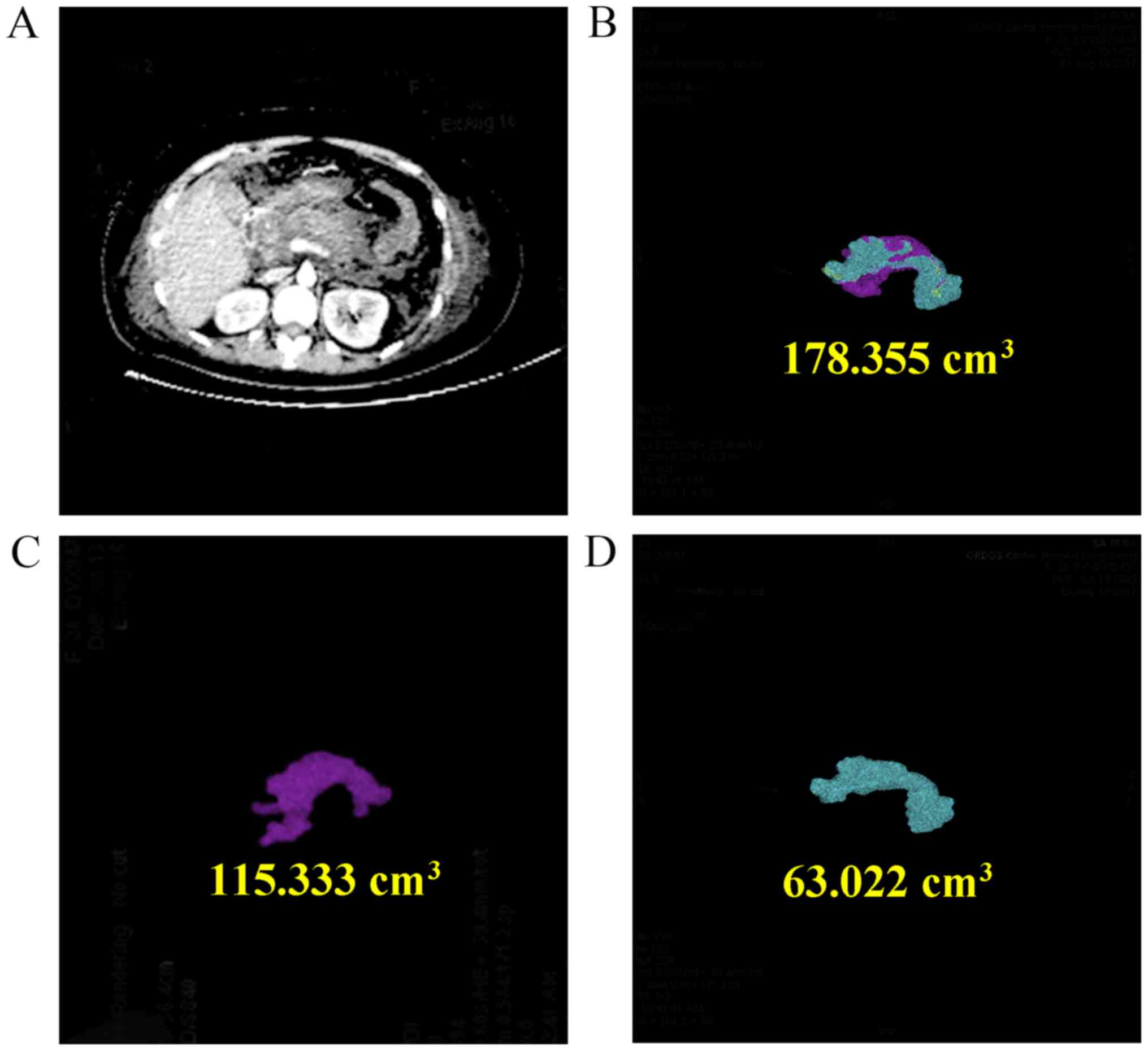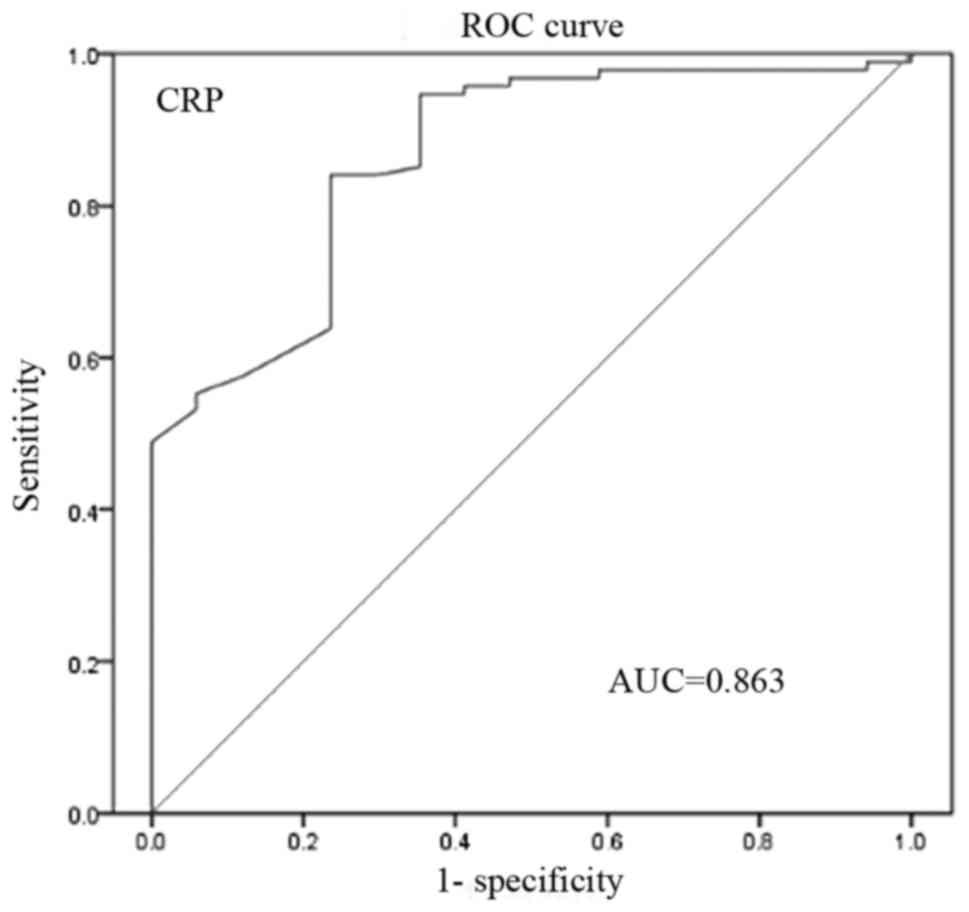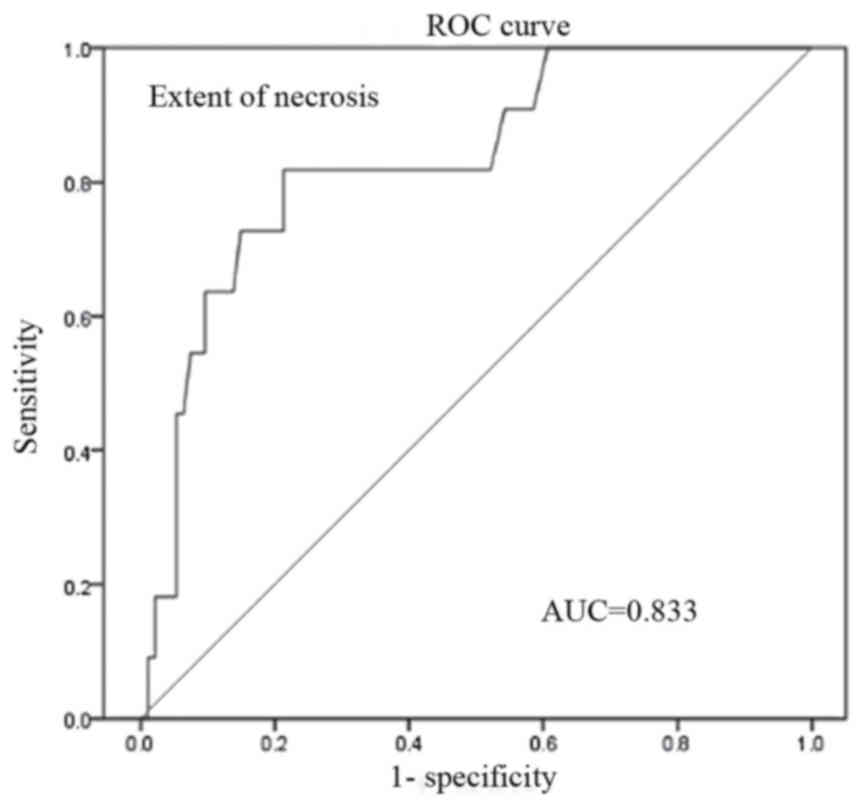|
1
|
Al Mofleh IA: Severe acute pancreatitis:
Pathogenetic aspects and prognostic factors. World J Gastroenteml.
14:675–684. 2008. View Article : Google Scholar
|
|
2
|
Zerem E, Imamovic G, Omerović S and
Imširović B: Randomized controlled trial on sterile fluid
collections management in acute pancreatitis: Should they be
removed? Surg Erldosc. 23:2770–2777. 2009. View Article : Google Scholar
|
|
3
|
Bollen TL: Imaging of acute pancreatitis:
Update of the revised Atlanta classification. Radiol Clin North Am.
50:429–445. 2012. View Article : Google Scholar : PubMed/NCBI
|
|
4
|
Beger HG and Rau BM: Severe acute
pancreatitis: Clinical course and management. World J
Gastroenterol. 13:5043–5051. 2007. View Article : Google Scholar : PubMed/NCBI
|
|
5
|
Yadav D and Lowenfels AB: The epidemiology
of pancreatitis and pancreatic cancer. Gastroenterology.
144:1252–1261. 2013. View Article : Google Scholar : PubMed/NCBI
|
|
6
|
Rashid N, Sharma PP, Scott RD, Lin KJ and
Toth PP: All-cause and acute pancreatitis health care costs in
patients with severe hypertriglyceridemia. Pancreas. 46:57–63.
2017. View Article : Google Scholar : PubMed/NCBI
|
|
7
|
Qiu L, Sun RQ, Jia RR, Ma XY, Cheng L,
Tang MC and Zhao Y: Comparison of existing clinical scoring systems
in predicting severity and prognoses of hyperlipidemic acute
pancreatitis in Chinese patients: A retrospective study. Medicine
(Baltimore). 94:e9572015. View Article : Google Scholar : PubMed/NCBI
|
|
8
|
Banks PA, Bollen TL, Dervenis C, Gooszen
HG, Johnson CD, Sarr MG, Tsiotos GG and Vege SS: AcutePancreatitis
Classification Working Group: Classification of acute
pancreatitis-2012: Revision of the Atlanta classification and
definitions by international consensus. Gut. 62:102–111. 2013.
View Article : Google Scholar : PubMed/NCBI
|
|
9
|
Cameron JL, Crisler C, Margolis S,
DeMeester TR and Zuidema GD: Acute pancreatitis with hyperlipemia.
Surgery. 70:53–61. 1971.PubMed/NCBI
|
|
10
|
Fortson MR, Freedman SN and Webster PD
III: Clinical assessment of hyperlipidemic pancreatitis. Am J
Gastroenterol. 90:2134–2139. 1995.PubMed/NCBI
|
|
11
|
Yadav D and Pitchumoni CS: Issues in
hyperlipidemic pancreatitis. J Clin Gastroenterol. 36:54–62. 2003.
View Article : Google Scholar : PubMed/NCBI
|
|
12
|
Rehan A, Shabbir Z, Shaukat A and Riaz O:
Diagnostic accuracy of modified CT severity index in assessing
severity of acute pancreatitis. J Coll Physicians Surg Pak.
26:967–970. 2016.PubMed/NCBI
|
|
13
|
Cao X, Cao F, Li A, Gao X, Wang XH, Liu
DG, Fang Y, Guo DH and Li F: Predictive factors of pancreatic
necrosectomy following percutaneous catheter drainage as a primary
treatment of patients with infected necrotizing pancreatitis. Exp
Ther Med. 14:4397–4404. 2017.PubMed/NCBI
|
|
14
|
Besselink M, Van-Santvoort HM, Boermeester
MA, Nieuwenhuijs VB, van Goor H, Dejong CH, Schaapherder AF and
Gooszen HG: Dutch Acute Pancreatitis Study Group: Timing and impact
of infections in acute pancreatitis. Br J Surg. 96:267–273. 2009.
View Article : Google Scholar : PubMed/NCBI
|
|
15
|
van Santvoort HC, Bakker OJ, Bollen TL,
Besselink MG, Ali Ahmed U, Schrijver AM, Boermeester MA, van Goor
H, Dejong CH, van Eijck CH, et al: A conservative and minimally
invasive approach to necrotizing pancreatitis improves outcome.
Gastroenterology. 141:1254–1263. 2011. View Article : Google Scholar : PubMed/NCBI
|
|
16
|
Huang YX, Jia L, Jiang SM, Wang SB, Li MX
and Yang BH: Incidence and clinical features of hyperlipidemic
acute pancreatitis from Guangdong, China: A retrospective
multicenter study. Pancreas. 43:548–552. 2014. View Article : Google Scholar : PubMed/NCBI
|
|
17
|
Chang YT, Chang MC, Tung CC, Wei SC and
Wong JM: Distinctive roles of unsaturated and saturated fatty acids
in hyperlipidemic pancreatitis. World J Gastroenterol.
21:9534–9543. 2015. View Article : Google Scholar : PubMed/NCBI
|
|
18
|
Nair S, Yadav D and Pitchumoni CS:
Association of diabetic ketoacidosis and acute pancreatitis:
Observations in 100 consecutive episodes of DKA. Am J
Gastroenterol. 95:2795–2800. 2000. View Article : Google Scholar : PubMed/NCBI
|
|
19
|
Morita Y, Yoshikawa T, Takeda S, Matsuyama
K, Takahashi S, Yoshida N, Clemens MG and Kondo M: Involvement of
lipid peroxidation in free fatty acid-induced isolated rat
pancreatic acinar cell injury. Pancreas. 17:383–389. 1999.
View Article : Google Scholar
|
|
20
|
Saharia P, Margolis S, Zuidema GD and
Cameron JL: Acute pancreatitis with hyperlipemia: Studies with an
isolated perfused canine pancreas. Surgery. 82:60–67.
1977.PubMed/NCBI
|
|
21
|
Cardoso FS, Ricardo LB, Oliveira AM,
Canena JM, Horta DV, Papoila AL and Deus JR: C-reactive protein
prognostic accuracy in acute pancreatitis: Timing of measurement
and cutoff points. Eur J Gastroenterol Hepatol. 25:784–789. 2013.
View Article : Google Scholar : PubMed/NCBI
|
|
22
|
Khanna AK, Meher S, Prakash S, Tiwary SK,
Singh U, Srivastava A and Dixit VK: Comparison of Ranson, Glasgow,
MOSS, SIRS, BISAP, APACHE-II, CTSI scores, IL-6, CRP, and
procalcitonin in predicting severity, organ failure, pancreatic
necrosis, and mortality in acute pancreatitis. HPB Surg.
2013:3675812013. View Article : Google Scholar : PubMed/NCBI
|
|
23
|
Yin G, Hu G, Cang X, Yu G, Hu Y, Xing M,
Chen C, Huang Y, Tang M, Zhao Y, et al: C-reactive protein:
Rethinking its role in evaluating the severity of hyperlipidemic
acute pancreatitis. Pancreas. 43:1323–1328. 2014. View Article : Google Scholar : PubMed/NCBI
|
|
24
|
Tsuang W, Navaneethan U, Ruiz L, Palascak
JB and Gelrud A: Hypertriglyceridemic pancreatitis: Presentation
and management. Am J Gastroenterol. 104:984–991. 2009. View Article : Google Scholar : PubMed/NCBI
|
|
25
|
Zhou CL, Zhang CH, Zhao XY, Chen SH, Liang
HJ, Hu CL and Chen NW: Early prediction of persistent organ failure
by serum apolipoprotein A-I and high-density lipoprotein
cholesterol in patients with acute pancreatitis. Clin Chim Acta.
476:139–145. 2018. View Article : Google Scholar : PubMed/NCBI
|
|
26
|
Cui J, Xiong J, Zhang Y, Peng T, Huang M,
Lin Y, Guo Y, Wu H and Wang C: Serum lactate dehydrogenase is
predictive of persistent organ failure in acute pancreatitis. J
Crit Care. 41:161–165. 2017. View Article : Google Scholar : PubMed/NCBI
|
|
27
|
Peng T, Peng X, Huang M, Cui J, Zhang Y,
Wu H and Wang C: Serum calcium as an indicator of persistent organ
failure in acute pancreatitis. Am J Emerg Med. 35:978–982. 2017.
View Article : Google Scholar : PubMed/NCBI
|
|
28
|
Peng T, Zhang Y, Wu H and Wang C:
Assessment of red blood cell distribution width as an early
predictor of persistent organ failure in patients with acute
pancreatitis. Pancreas. 18:393–398. 2017.
|
|
29
|
Wang D, Yang J, Zhang J, Zhang S, Wang B,
Wang R and Liu M: Red cell distribution width predicts deaths in
patients with acute pancreatitis. J Res Med Sci. 20:424–428. 2015.
View Article : Google Scholar : PubMed/NCBI
|
|
30
|
Patel KV, Semba RD, Ferrucci L, Newman AB,
Fried LP, Wallace RB, Bandinelli S, Phillips CS, Yu B, Connelly S,
et al: Red cell distribution width and mortality in older adults: A
meta-analysis. J Gerontol A Biol Sci Med Sci. 65:258–265. 2010.
View Article : Google Scholar : PubMed/NCBI
|
|
31
|
Meyrignac O, Lagarde S, Bournet B, Mokrane
FZ, Buscail L, Rousseau H and Otal P: Acute pancreatitis:
Extrapancreatic necrosis volume as early predictor of severity.
Radiology. 276:119–128. 2015. View Article : Google Scholar : PubMed/NCBI
|
|
32
|
Mentula P, Kylänpää ML, Kemppainen E,
Jansson SE, Sarna S, Puolakkainen P, Haapiainen R and Repo H: Early
prediction of organ failure by combined markers in patients with
acute pancreatitis. Br J Surg. 92:68–75. 2010. View Article : Google Scholar
|












